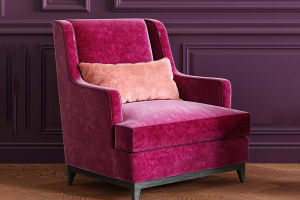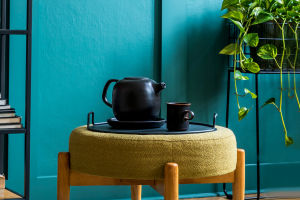The decision regarding whether a door should open inward or outward is a crucial design consideration, impacting not only the building's appearance and style but also its safety, convenience, and climate adaptability.
When making this choice, it's essential to consider a variety of factors to ensure the optimal outcome.
Advantages of Inward-Opening Doors:
Security: Doors that open inward are generally safer, as they prevent easy access from the outside by impeding the efforts of bad weather, strangers, or potential intruders. This provides an additional layer of security to the home.
Insulation: Inward-opening doors are superior at protecting interior spaces from adverse weather conditions. When opened, they minimize temperature fluctuations within the room, which, in turn, reduces heating and cooling expenses.
Furthermore, inward-opening doors remain steadfast even during inclement weather, helping maintain a warm interior.
Style and Aesthetics: Inward-opening doors are usually more harmonious with the building's look and style.
This design approach seamlessly integrates the door into the building's overall appearance, avoiding a prominent and mismatched look. It allows for more refined and consistent designs that complement the building's style.
Ease of Maintenance: Inward-swinging doors are typically easier to maintain, as they are sheltered from harsh external weather conditions. Additionally, these doors are less prone to dirt and damage, making cleaning and repairs more straightforward.
Privacy: Inward-opening doors afford greater privacy since they remain concealed from external view, offering enhanced privacy protection.
Disadvantages of Inward-Opening Doors:
Space Occupation: Inward-opening doors necessitate indoor space when open, potentially restricting room layouts and furniture placement, particularly in entryways with limited space.
Convenience: Inward-opening doors may be less convenient, especially when moving large items like furniture or appliances, as they require extra space to open fully.
Exit Safety: Inward-opening doors may pose safety risks during emergencies. In cases like fires or evacuations, these doors can become obstructed, jeopardizing occupants' safety. This is a critical consideration in security planning.
Advantages of Outward-Opening Doors:
Space Utilization: Outward-opening doors do not encroach on indoor space, making them suitable for settings with space constraints. This allows for flexible furniture arrangement and decor placement.
Convenience: Outward-opening doors provide easier ingress and egress, eliminating the need for additional space to open the door. This convenience is especially valuable in busy households and commercial environments.
Emergency Evacuation: In emergencies, outward-swinging doors are generally easier to open, facilitating swift evacuations during fires or other critical situations.
Ventilation: Outward-opening doors promote improved ventilation and the intake of fresh air, enhancing indoor air quality and comfort.
Disadvantages of Outward-Opening Doors:
Safety: Doors that open from the outside may be less secure, allowing easier access for unfavorable weather conditions, strangers, or potential intruders. As a result, exterior opening doors may necessitate additional security measures like robust locks and security systems.
Insulation: Outward-opening doors can expose indoor temperatures to external weather conditions, making them susceptible to heat loss during cold weather.
Style and Aesthetics: Outward-opening doors may disrupt a building's overall appearance, as they are typically more visible and may not blend seamlessly with the structure's architectural style.
Privacy: Outward-opening doors generally offer less privacy, as they are visible to passersby or strangers. This may not be suitable for establishments aiming to maintain a higher level of privacy.
The choice of door opening direction may require a thoughtful compromise, considering factors such as safety, aesthetics, practicality, and convenience.
The wisest approach is to consult with a professional architect or designer when making this decision. They can provide expert guidance tailored to your specific needs and circumstances, ensuring your door is both secure and functional while harmonizing with the overall design of your building.


